|
Books Should Be Free Loyal Books Free Public Domain Audiobooks & eBook Downloads |
|
|
Books Should Be Free Loyal Books Free Public Domain Audiobooks & eBook Downloads |
|
Travel Books |
|---|
|
Book type:
Sort by:
View by:
|
By: Mabel Bent (c.1847-1929) | |
|---|---|
 Southern Arabia
Southern Arabia
Southern Arabia recounts a threatening four-month journey into North Eastern Ethiopia by the Bents. These brave travelers were the first to travel without disguise in a region where Westerners had formerly been fortunate to escape with their lives. | |
By: Douglas Grant (aka Isabel Ostrander) (1883-1924) | |
|---|---|
 Anything once
Anything once
An unlikely pair of wanderers they were; the orphan girl Lou and her travelling partner Jim Botts. Jim appeared in need of following some apparent 'rules' during the journey, while Lou seemed in need of better clothing, and perhaps some refinement. But who was most benefitting whom on the week-long journey from rural village to big city? And which of the two was willing to try anything once? (Introduction by Roger Melin) | |
By: George Bethune English (1787-1828) | |
|---|---|
 A Narrative of the Expedition to Dongola and Sennaar
A Narrative of the Expedition to Dongola and Sennaar
As a second lieutenant in the United States Marine Corps during the War of 1812 assigned to Marine Corps headquarters, English sailed to the Mediterranean, and was among the first citizens of the United States known to have visited Egypt. Shortly after arriving in Egypt he resigned his commission, converted to Islam and joined Isma'il Pasha in an expedition up the Nile River against Sennar in 1820, winning distinction as an officer of artillery. He published his Narrative of the Expedition to Dongola and Sennaar (London 1822) regarding his exploits. (Introduction adapted by obform from Wikipedia) | |
By: Jeannie Gunn (1870-1961) | |
|---|---|
 We of the Never-Never
We of the Never-Never
We of the Never Never is the second book written by Jeannie Gunn under the name of “Mrs Aeneas Gunn”. It is considered by many as a classic of Australian writing. The book was published as a novel but draws on the author’s own experience in settling on the Elsey Station way out in the "back blocks" of the Katherine region of the Northern Territories of Australia early in the 20th century. The primary concession to fiction was that she fictionalised the names of many of the real-life characters that featured in her life at the time, giving them names like "the Sanguine Scott", "the Fizzer", "the Quiet Stockman" and "the Dandy"... | |
By: Randolph B. Marcy (1812-1887) | |
|---|---|
 Prairie Traveler
Prairie Traveler
Commissioned by the US War Department and written in 1859 by a decorated US Army captain, The Prairie Traveler is a complete how-to travel guide for the westward-bound pioneer. Covering topics from first aid for rattlesnake bites to how to travel 70 miles across the desert without water for one's livestock, the guide includes 28 travel itineraries with mileage and firewood availability. | |
By: Reuben Gold Thwaites (1853-1913) | |
|---|---|
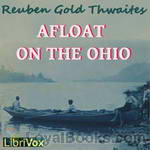 Afloat on the Ohio
Afloat on the Ohio
Afloat on the Ohio, An Historical Pilgrimage, of a Thousand Miles in a Skiff, From Redstone to Cairo.There were four of us pilgrims—my Wife, our Boy of ten and a half years, the Doctor, and I. My object in going—the others went for the outing—was to gather "local color" for work in Western history. The Ohio River was an important factor in the development of the West. I wished to know the great waterway intimately in its various phases,—to see with my own eyes what the borderers saw; in imagination, to redress the pioneer stage, and repeople it. ( From the Preface ) | |
By: Agnes Edwards (1888-1954) | |
|---|---|
 Old Coast Road From Boston to Plymouth
Old Coast Road From Boston to Plymouth
A delightful trip from Boston through a dozen South Shore towns to Plymouth, stopping in each to explore a bit of the local history and 'modern' highlights. Written in 1920, it's a great journey through the past. | |
By: Unknown | |
|---|---|
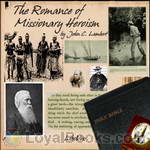 The Romance of Missionary Heroism
The Romance of Missionary Heroism
The title page gives this book the subtitle, “True stories of the intrepid bravery and stirring adventures of missionaries with uncivilized man, wild beasts, and the forces of nature in all parts of the world.” The thrilling accounts in this collection include stories of Jacob Chamberlain’s medical ministry in India, the dangers faced by Alexander Mackay in Uganda, James Chalmers’ work among the headhunters of New Guinea, John Paton’s mission to the South Sea cannibals, and the Hawaiian queen Kapiolani’s challenge to the gods of the volcano... | |
By: Various | |
|---|---|
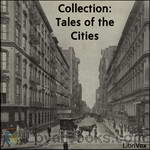 Collection: Tales of the Cities
Collection: Tales of the Cities
This is a collection of city stories, fiction or non-fiction, in English and published before 1923. Contributions have been chosen by the reader himself. | |
By: John Lloyd Stephens (1805-1852) | |
|---|---|
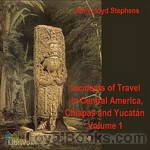 Incidents of Travel in Central America, Chiapas, and Yucatan, Vol. 1
Incidents of Travel in Central America, Chiapas, and Yucatan, Vol. 1
The year is 1838. The scene is the dense Honduran forest along the Copán River. Two men, John Lloyd Stephens and Frederick Catherwood, are about to rediscover Mayan civilization. Their guide, slashing through the rampant growth with his machete, leads them to a structure with steps up the side, shaped like a pyramid. Next they see a stone column, fourteen feet high, sculptured on the front with a portrait of a man, “solemn, stern and well fitted to excite terror,” covered on the sides with hieroglyphics, and with workmanship “equal to the finest monuments of the Egyptians... | |
By: Mark Twain (1835-1910) | |
|---|---|
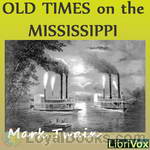 Old times on the Mississippi
Old times on the Mississippi
Old Times on the Mississippi is a non-fiction work by Mark Twain. It was published in 1876. Originally published in serial form in the Atlantic Monthly, in 1875, this same work was published as chapters 4 through 17 in Twain's later work, Life on the Mississippi (1883). Old Times on the the Mississippi has one last chapter that has nothing to do with the rest of the book. A Literary Nightmare describes the funny/sad/maddening effect that a catchy jingle can have on those unlucky enough to be captured by one. | |
By: Edna Brush Perkins (1880-1930) | |
|---|---|
 The White Heart of Mojave
The White Heart of Mojave
"The White Heart of the Mojave" recounts a 1920's adventure "in the wind and sun and big spaces" of Death Valley by two independent minded women, Edna Brush Perkins and Charlotte Hannahs Jordan. Both women were early feminists, Edna as chairwoman of the greater Cleveland Woman's Suffrage Party (1916-18). At the end of the Great War, the two friends wanted nothing more than to escape "to the solitariness of some wild and lonely place far from city halls, smokestacks, national organizations, and streets of little houses all alike... | |
By: Washington Irving (1783-1859) | |
|---|---|
 The Alhambra: A Series of Tales and Sketches of the Moors and Spaniards
The Alhambra: A Series of Tales and Sketches of the Moors and Spaniards
This is a collection of essays, verbal sketches, and stories by Washington Irving. Irving lived at the Alhambra Palace while writing some of the material for his book. In 1828, Washington Irving traveled from Madrid, where he had been staying, to Granada, Spain. At first sight, he described it as "a most picturesque and beautiful city, situated in one of the loveliest landscapes that I have ever seen." He immediately asked the then-governor of the historic Alhambra Palace as well as the archbishop of Granada for access to the palace, which was granted because of Irving's celebrity status... | |
By: Francis Archibald Bruton (1869-1929) | |
|---|---|
 Lancashire
Lancashire
The county of Lancashire in the north-west of England is best known as the engine room of the nineteenth-century Industrial Revolution. Steering clear of the industrial districts, F. A. Bruton takes the reader on an engaging tour of the county's beauty spots and lesser known landscapes. Taking the view that the charm of a district is nothing without its historical associations, Bruton packs his account with historical detail and literary references to, among others, Leland, Wordsworth, Ruskin, Arnold, and Mrs. Carlyle. (Introduction by Phil Benson) | |
By: James T. Nichols (1865-?) | |
|---|---|
 Birdseye Views of Far Lands
Birdseye Views of Far Lands
Birdseye Views of Far Lands is an interesting, wholesome presentation of something that a keen-eyed, alert traveler with the faculty of making contrasts with all classes of people in all sorts of places, in such a sympathetic way as to win their esteem and confidence, has been able to pick up as he has roamed over the face of the earth for a quarter of a century.The book is not a geography, a history, a treatise on sociology or political economy. It is a Human Interest book which appeals to the reader who would like to go as the writer has gone and to see as the writer has seen the conformations of surface, the phenomena of nature and the human group that make up what we call a "world... | |
By: John Lloyd Stephens (1805-1852) | |
|---|---|
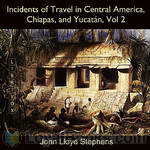 Incidents of Travel in Central America, Chiapas, and Yucatán, Vol. 2
Incidents of Travel in Central America, Chiapas, and Yucatán, Vol. 2
The year is 1838. The scene is the dense Honduran forest along the Copán River. Two men, John Lloyd Stephens and Frederick Catherwood, are about to rediscover Mayan civilization. Their guide, slashing through the rampant growth with his machete, leads them to a stone column, fourteen feet high, sculptured on the front with a portrait of a man, “solemn, stern and well fitted to excite terror,” covered on the sides with hieroglyphics, and with workmanship “equal to the finest monuments of the Egyptians... | |
By: William Alexander MacKay (1842-1905) | |
|---|---|
 Zorra Boys at Home and Abroad, or, How to Succeed
Zorra Boys at Home and Abroad, or, How to Succeed
By Zorra, in the following sketches, is meant a little district in Oxford county, Ontario, some ten miles square, composed of part of East and part of West Zorra, and containing a population of about fourteen hundred. It was settled about the year 1830, chiefly by Highlanders from Sutherlandshire, Scotland.Within the last forty years there have gone from this district over one hundred young men who have made their mark in the world. With most of these it has been the writer's good fortune to be personally and intimately acquainted; and companionship with some of them has been to him a pleasure and a benefit... | |
By: Haji A. Browne | |
|---|---|
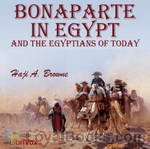 Bonaparte in Egypt and the Egyptians of To-day
Bonaparte in Egypt and the Egyptians of To-day
Knowing the Egyptian as I know him, I cannot but think that he is greatly misunderstood, even by those who are sincerely anxious to befriend him. His faults and his failings are to be found at large in almost any of the scores of books that have of late years been written about him and his country; but, though not a few have given him credit for some of his more salient good points, yet none that I have seen have shown any just appreciation of him as he really is. (From the Preface) | |
By: John Charles Van Dyke (1856-1932) | |
|---|---|
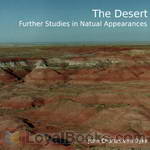 The Desert, Further Studies in Natural Appearances
The Desert, Further Studies in Natural Appearances
The Desert by John Charles Van Dyke, published in 1901, is a lush, poetic description of the natural beauty of the American Southwest. "What land can equal the desert with its wide plains, its grim mountains, and its expanding canopy of sky!" Van Dyke, a cultivated art historian, saw "sublimity" in the desert's "lonely desolation," which previous generations had perceived only as a wasteland, and his book has a conservationist flavor which seems distinctly modern. "The deserts should never be reclaimed," he writes... | |
By: Queensland Railways | |
|---|---|
 Tours in the South Coast District
Tours in the South Coast District
An early booklet, designed to encourage tourism in the northern parts of New South Wales, and the southern parts of Queensland, particularly the area now in the Gold Coast.(Introduction by Timothy Ferguson) | |
By: Mary Roberts Rinehart (1876-1958) | |
|---|---|
 Through Glacier Park
Through Glacier Park
This is about a three-hundred mile trip across the Rocky Mountains on horseback with Howard Eaton. It is about fishing, and cool nights around a camp-fire, and long days on the trail. It is about a party of all sorts, from everywhere, of men and women, old and young, experienced folk and novices, who had yielded to a desire to belong to the sportsmen of the road. And it is by way of being advice also. Your true convert must always preach. (Introduction by Mary Roberts Rinehart quoted from the text.) | |
By: Sir Frank Fox (1874-1960) | |
|---|---|
 England
England
What is this strange land called England; so small in size yet so powerful in influence? What makes her so unique, talented and persistent? This book attempts to answer that. It is a short, well written explanation of England as a unique country written by someone who loved it deeply and yet, as an Australian, could be a bit impartial. In the first part he explains the 'making' of England; the Britons and the Romans, the Anglo-Saxons and the Normands. But from there he attempts to give an essence or flavor, delving into the work, the play, the schools, the churches and especially the landscape which make it special... | |
By: John William Norie (1772-1843) | |
|---|---|
 Piloting Directions for the Gulf of Finland
Piloting Directions for the Gulf of Finland
Norie's series of piloting and sailing directions was something of a staple in the chart-room of 19th century British (and other) merchant vessels. The description of landmarks and ports, as well as the rules and regulations provide another viewpoint to an earlier age. Please note that these piloting directions are rather completely out of date. They are given here for purposes of historical interest only, and should not be used for navigation purposes. | |
By: Ki no Tsurayuki (872-945) | |
|---|---|
 The Tosa Diary
The Tosa Diary
Ki no Tsurayuki was a Japanese waka poet of the Heian period. In 905, he was one of the poets ordered to compile the "Kokinshu - Collected Japanese Poems of Ancient and Modern Times". He is also one of the Thirty-six Poetry Immortals of Japan. The Tosa Diary, written in 935, is considered the major work of Tsurayuki. It is an account of his return to the capital Kyoto from Tosa province, where he had served as governor since 930. The journey is by boat, and Tsurayuki tells about his sea sickness and fear of pirates, his impressions of the coast, and the various offerings to placate the gods of the sea... | |
By: Various | |
|---|---|
 Australian Miscellany
Australian Miscellany
A collection in celebration of 2012 Year of Reading Australia. Readers chose fiction, non fiction and poetry - we only asked that the readings should have some sort of Australian hook. So they can be by an Australian author, or about Australia, or just have a prominent bit of Australianess in the plot. Failing that: even being performed by Australians will do! :D . | |
By: John Leland (1503-1552) | |
|---|---|
 The Itinerary of John Leland in or About the Years 1535-1543, Part IX
The Itinerary of John Leland in or About the Years 1535-1543, Part IX
John Leland's 'Itinerary' was the product of several journeys around England and Wales undertaken between 1538 and 1543. The manuscript is made up of Leland's notebooks, which were first published in the 18th century, and later in a ten-part, five-volume edition published by Lucy Toulmin (1906-10). Part IX of the manuscript begins in the south of England and gradually meanders its way, county by county, through central and northern England up to the borders of Scotland. Leland did not prepare the manuscript for publication and it is sometimes difficult to follow, with occasional geographically-misplaced sections, lists of headings with content yet to be added, and the odd lapse into Latin... | |
By: Robert Goadby (1721-1778) | |
|---|---|
 Surprising Adventures of Bampfylde Moore Carew, King of the Beggars
Surprising Adventures of Bampfylde Moore Carew, King of the Beggars
The Surprising Adventures of Bampfylde Moore Carew recounts the wide-ranging exploits of a real-life rogue – a wily professional mendicant who roams 18th-century England extracting charity from merchants, clergyman, and members of the landed gentry alike, employing in his craft an ingenious variety of deceptions and disguises put on for the purpose. Often he impersonates a shipwreck-surviving seaman and uses his wide knowledge of foreign parts and personages to achieve plausibility. Or he might appear on a doorstep as a destitute woman in widow's weeds, toting borrowed babes to enhance the effect... | |
By: Sidney Heath (1872-1953) | |
|---|---|
 Exeter
Exeter
Exeter, county town of Devon, is one of England's most historic cities with remains of the Roman occupation and medieval times still on view. Exeter cathedral, founded in 1050 and completed 400 years later, has the longest uninterrupted vaulted ceiling in the country. This short book in Blackie & Sons' Beautiful England series details the history of the city and it many sites of interest, with chapters on the city, the cathedral and the River Exe. Readers who can access the printed version of the book on Internet Archive, may enjoy looking at E. W Haslehursts' 12 colour illustrations while listening to this audiobook. - Summary by Phil Benson | |
By: Eva March Tappan (1854-1930) | |
|---|---|
 World’s Story Volume XII: The United States
World’s Story Volume XII: The United States
This is the twelfth volume of the 15-volume series of The World’s Story: a history of the World in story, song and art, edited by Eva March Tappan. Each book is a compilation of selections from prose literature, poetry and pictures and offers a comprehensive presentation of the world's history, art and culture, from the early times till the beginning of the 20th century. Part XII compiles stories about the early history of the United States, starting with the first explorators, the fights with the native Americans, the early settlers and culminating with the struggle for independence from the European leaders. - Summary by Sonia | |
By: National Geographic Society | |
|---|---|
 National Geographic Magazine Vol. 09 - 03. March 1898
National Geographic Magazine Vol. 09 - 03. March 1898
The National Geographic Magazine, an illustrated monthly, Vol IX, the March Number. It includes the following articles: Dwellings of the Saga-time in Iceland, Greenland, and Vineland, by Cornelia Horsford Completion of the La Boca Dock Two Hundred Miles up the Kuskokwim, by Charles Hallock The Mt St Elias Expedition of Prince Luigi Amadeo of Savoy, by Eliza Ruhamah Scidmore The Origin of the French Canadians The Height of Mt Rainier, by Richard U. Goode Geographic Work by the Bureau of American Ethnology, by W. J. McGee A Relic of the Lewis and Clarke Expedition, by Cyrus C. Babb An Interesting Rumor Concerning Andree, by John Hyde Geographic Names in West Greenland, by Ralph S. Tarr | |
By: Arthur Henry Patterson (1857-1935) | |
|---|---|
 Through Broadland in a Breydon Punt
Through Broadland in a Breydon Punt
Arthur Henry Patterson was a self-taught naturalist who, from a very early age, devoted much of his free time to observing, discovering and documenting all aspects of the natural history of the Norfolk Broads, especially the area around Breydon Water near his home town of Great Yarmouth. At some 75000 acres , the Broads are the largest protected wetland in Britain. AHP was the author of many books about Broadland as well as submitting numerous papers and articles to nature societies and journals... | |
By: Review of U.S. Human Space Flight Plans Committee | |
|---|---|
 Seeking a Human Spaceflight Program Worthy of a Great Nation
Seeking a Human Spaceflight Program Worthy of a Great Nation
"The [Review of U.S. Human Space Flight Plans Committee] shall conduct an independent review of ongoing U.S. human space flight plans and programs, as well as alternatives, to ensure the nation is pursuing the best trajectory for the future of human space flight – one that is safe, innovative, affordable, and sustainable. The Committee should aim to identify and characterize a range of options that spans the reasonable possibilities for continuation of U.S. human space flight activities beyond retirement of the Space Shuttle... | |